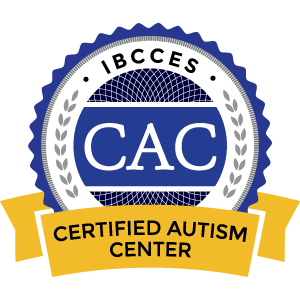On Oct. 12, the newest movie about space opened worldwide. First Man is the riveting story behind the first crewed mission to the moon, focusing on Neil Armstrong and the decade leading to the historic Apollo 11 flight.
On the heels of their six-time Academy Award®-winning smash, La La Land, Oscar®-winning director Damien Chazelle and star Ryan Gosling reteam for a visceral and intimate account told from Armstrong’s perspective, based on the book by James R. Hansen. The movie also stars Emmy Award®-winning actress Claire Foy (The Crown), Emmy Award®-winning actor Kyle Chandler (Friday Night Lights, Argo), Jason Clarke (Zero Dark Thirty) and Corey Stoll (Ant-Man, House of Cards).

Unlike many of the more famous space movies, First Man is both loud, jarring and evocative, while also lingering in quiet moments between characters. It has some of the most realistic shots of space flight, highlighting the violence and fury of traveling to space on top of a giant rocket.
Despite its scope, this movie felt like an intimate portrait of Armstrong, rather than an epic tale of the first Moon landing. The trailers have made it seem very action-packed, but the most telling moments in the movie were small, quiet minutes spent with Armstrong grappling with his feelings.
The structure
That’s the first thing about First Man that broke from the traditional biopic format. Loosely established around the Oscar-winning Ray, this formula shows the origins of our subject, shows them gaining success in the first act, hitting snags like personal demons or other setbacks in the second act and then triumphantly returning to their profession in the third.
First Man kept that essential three-act structure, but lost the formula for a biopic. Instead, it focused on Armstrong as a man of few words, but of bravery and skill. The first scenes are of him in an experimental plane bouncing off the Earth’s atmosphere. His calm under pressure during this episode is then played out again during the near-disaster during Gemini 8 and again during the Lunar Module landing during Apollo 11.
No one in the movie told you this; Chazelle trusts the audience to see the linear path of Armstrong’s skills in these tight spots.
The movie also uses Karen Armstrong’s death as a throughline. If this isn’t a traditional biopic, it could well be one that focuses on this one aspect of Armstrong’s life: how he coped with the death of his young daughter. Within the first fifteen minutes, the movie skillfully evokes the dire situation with Karen, how the Armstrongs weren’t dealing with it well and how Armstrong himself silently bore his grief.
Karen haunted him in small moments for the rest of the film, but did it from the background. Every time Armstrong struggled at a funeral, she was there. That backgrounding of his grief also led to one of the most affecting moments in the movie in the third act. My wife cried two weeks after seeing the movie just thinking about the scene.

The details
Those small details also were a highlight of the film. History was on the screen for those who appreciated it, but it was not a driving force in the narrative. Blink and you might have missed significant appearances by Chuck Yeager, Jim Lovell and more. The movie went so far as to cast someone to play Robert Lawrence, the first black astronaut who died in a training accident before flying to space. However, I missed Lawrence completely when watching the screening.
The most telling one of these moments was the Apollo 1 fire. Chazelle’s direction lingered on the capsule hatch for a few seconds after it was closed. The script didn’t say anything about how the door contributed to the tragedy, but the film itself highlighted it. For those unfamiliar with the story, the Apollo capsule being tested during Apollo 1 didn’t have a door that could be opened from the inside. It was bolted shut by personnel, similar to how both Mercury and Gemini operated. After the tragedy, astronauts insisted that the new hatch door be designed so that it could be opened by one astronaut from the inside.
Later in the film, the camera lingered for just a few moments on the new door once the three astronauts were in the Apollo 11 capsule. No dialog called out the hatch or its significance, but the camera did.
The acting
The last part of the movie that stood out was the acting itself. So many great moments were conveyed by a hollowed out Ryan Gosling. How many stars could carry a movie while only saying 20-30 lines of dialog? I knew Gosling mostly from Remember the Titans; I knew he did other things, but hadn’t actually seen The Notebook or Blue Valentine or even Blade Runner 2049. He was so excellent in this in such an understated role.

His opposite, Claire Foy, also did a masterful job of showing how the other parent copes with the loss of a child. Foy’s Janet Armstrong is the more outgoing of the married pair, but still cannot connect to a husband to share their grief. A later movie scene where she asks Jason Clarke’s Ed White if Neil had talked to him about Karen’s death, because he’s never talked to her about it, breaks the heart.
Foy also brings a fierceness to the role as she fights to get information on her husband during difficult missions. The balance she brings to the role is that she’s never seen as a barrier. She is not the stereotypical “wet blanket” love interest; she’s a partner in this marriage and demands to know what’s going on. Before the Apollo 11 mission, she holds Neil accountable for trying to leave without talking to his kids in a wonderful scene of passion and more subtext than the lines that are said.
Almost all of the supporting parts also work brilliantly. In small roles, Corey Stoll’s Buzz Aldrin conveys how difficult of a personality Buzz could be without making him a cartoon. Similarly, Clarke’s Ed White conveys just how likable the man was in life, when he inspired much of the Clear Lake community and still has a school named after him.
At its heart, this movie is about the Armstrong marriage dealing with their grief, which is why the final shots of the movie are so poignant. After showing all movie how the distance developed between the two, Janet sees Neil in quarantine. The two can’t connect or talk, but they silently reenact the scene from the end of Star Trek: Wrath of Khan. It’s a beautiful coda to a personal story full of beauty, grief, fury and silences.



